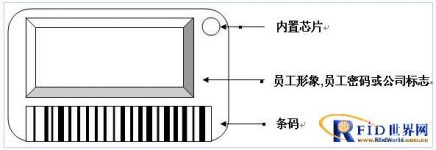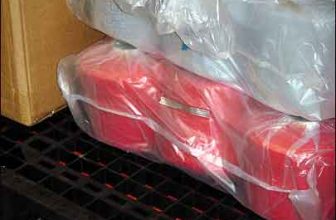
Case Study of Smart Card Management System for a Famous Garment Factory in Hong Kong
[ad_1]
In today’s society, more and more companies are applying smart card technology to corporate management. Small smart cards bring new management concepts to companies, greatly reducing their human resources and management costs. The application of smart card technology in enterprise management has evolved from a simple control door entry to being able to be used flexibly in various fields.
A well-known garment factory in Hong Kong is preparing to build a new large-scale factory in China, with more than 15,000 customer employees. In order to cope with the complicated problems of employee access, attendance, canteen consumption management, etc., the customer decided to adopt a smart card management system to reduce human resource costs and meet the requirements of improving management efficiency. After rigorous screening, the customer finally decided to use Intervet as the design consultant and equipment supplier and installation supplier for the entire system.
The customer’s workshop area is very large, and the entire workshop is composed of 8 main buildings. The customer plans to use the intelligent access control system to divide the entire plant into two parts, including the factory area and the dormitory area. In each building in the factory area, customers are required to install different management subsystems according to different management requirements. The engineering wiring of the entire project is very challenging. Intervet must ensure that the signal communication of the entire system is stable, and all access data, attendance data or other valid data can be securely stored.
In addition, the customer also proposed that the system must meet the following requirements including but not limited to:
1. The customer requires the smart card to be compatible with WIP bar code function at the same time. The smart card is used as a credential for employee identification, and the employee’s color photo needs to be printed as a certificate for the employee to enter the factory area on a daily basis. Employees are required to pass through the entrances and exits with access control and management devices in the factory. At the same time, security guards can also identify employees based on the color photos on their smart cards.
2. According to customer requirements, security systems must be installed in warehouses, office buildings and employees’ dormitories to ensure that these areas meet high security requirements. For the warehouse, the customer requires the system to prevent unauthorized unauthorized personnel from entering. When any illegal personnel attempts to move any goods in the warehouse, the system can immediately issue an alarm and notify the management personnel in time. The system provided by Intervet must be able to prevent any possibility of theft in the warehouse. At the same time, every entrance and exit of the factory area needs to be installed with an access control system to identify the identity of all employees entering the area. The customer in the plant requires the installation of multiple CCTV systems to monitor the plant on a daily basis. The area includes all entrances and exits of the office building, passages of important departments, warehouses, workshops, etc. In addition, in order to ensure the safety of employees, the customer requires that every dormitory in the factory be equipped with an access control system, so that all employees’ entry and exit are recorded, and at the same time, illegal personnel can be prevented from entering the employee dormitories.
3. Since the number of employees of the customer is as many as 15,000, the system is required to have stable storage and data transmission capabilities. The database must have enough space to store the access records of 15,000 people who enter and exit each system daily.
4. In the customer’s factory, the production area and the staff dormitory are relatively independent. Between the production area and the employee dormitory area, the customer requires the installation of access control and attendance systems. When employees pass through the factory area and the dormitory area, they need to use smart cards to pass through, so that the system can record the time between employees entering and leaving the two areas, and the entry and exit records are used as each The basis for calculating the salary at the end of the month. Since the production area and the staff dormitory are independent, the system must be installed in the open air and have the ability to withstand the impact of severe weather such as thunder, rain, and lightning on the system.
5. In order to strengthen the security, the customer requires the smart card to have the function of anti-passback. Prevent outsiders from using other employees’ smart cards to enter the factory area.
6. There is its own staff canteen in the dormitory area of the customer’s factory. The customer requested to install multiple sets of rice selling systems to solve daily rice selling needs.
The records of all the above systems are required by the customer to be transmitted to the customer’s headquarters office in two different locations in Hong Kong in real time, so that the company headquarters can uniformly calculate the staff’s salary and make data backup.
System solution
1. Use 13.56 MHz contactless (ISO 14443 Type A) readable and writable smart cards instead of smart contact cards with chips, which can prevent chip damage due to multiple contacts. Readable and writable smart cards are affordable and especially suitable for large-scale projects. When the rice selling system is applied, the function of an electronic wallet can be realized, eliminating the complicated procedures of cash transactions. In addition, because some customer systems such as WIP still use barcode scanning as the method of collecting data, in order to make the smart card system compatible with other original customer systems, the smart cards provided by Intervet are printed with barcodes, so that customers can smoothly transfer the smart card The system is compatible with the original system, and at the same time, the flexibility of the customer’s future upgrade of the entire system is greatly improved.
Smart card structure design

2. Install an access control system at each entrance and exit that is needed. Each employee must use a pre-authorized smart card to enter and exit different entrances and exits at different times. Without prior authorization, employees will not be able to enter the designated area. Part of the records within the designated time at the entrance and exit will be regarded as the employee’s attendance record at the same time. The data records of the entire system will be properly stored in the controller, and the system will automatically or manually transmit the data to the system server by the administrator. The system operating software can automatically generate and output different types of data recording reports, such as daily employee attendance reports, personal employee access records, system time reports, and so on.
The system also provides manual door opening device and emergency door opening device. In some areas with strict security requirements, the access control system and the alarm device can realize the linkage function. When the system finds that someone has entered illegally or the door has been opened for too long, the system will automatically initiate an alarm or send a voice alarm message to the manager’s phone.
Access control system chart

3. The warehouse in the factory has extremely high security requirements. In addition to the installation of access control and alarm systems, infrared detectors are also installed. Infrared detectors can detect changes in temperature, light, and vibration in the warehouse through electromagnetic waves emitted by themselves. Any movement of objects in the warehouse will automatically activate the alarm device without authorization. The design of this system can ensure the safety of the goods in the customer’s warehouse.
Schematic diagram of infrared detector operation

4. In addition to installing CCTV systems outside the customer’s factory and office buildings, we recommend that customers also install CCTV monitoring systems in sensitive places such as accounting, finance, IT data storage centers, sales data archives, warehouses, and important production workshops. 24-hour monitoring. Avoid unauthorized persons from entering these areas. In case of any unexpected accidents, the monitoring system can provide clear records for reference at any time.
When Intervet designed this CCTV system for the customer, we have an in-depth understanding of the customer’s security policies and procedures in order to make the entire system play its due function. For example, whether it is watched 24 hours a day, how long does it take to check images, and so on. After understanding the actual operation of the customer, we design the capacity and distribution method of the DVR for the customer based on the on-site environment and the configuration of the power supply system. We believe that only when these factors are fully considered can the effect and picture quality of CCTV be at its best. In addition, according to customers’ usage habits, we also provide customers with solutions for storing historical data to meet customers’ requirements for long-term data backup and viewing at any time.
5. Install 24 sets of Time Guard attendance systems on the open space between the factory production area and the staff dormitory. Each attendance system is installed in a pavilion. Time Guard card reader (Time Guard) with display and buzzer, with long-distance card reading and less than 0.1 seconds to read the performance of the card, every time employees in and out of the card, they can see it on the display The date and time of the second entry and exit. This time and attendance system greatly reduces the energy and time spent by customers in recording employees’ attendance time at work. Each Time Guard card reader (Time Guard) can store more than 10,000 entry and exit records, and can withstand the huge amount of data brought by frequent employee entry and exit every day.
At present, most computer systems in the industry use RS-232 data communication. However, RS232 communication has certain limitations in terms of data transmission speed, range, and network performance. RS-422 and RS-485 use differential voltage lines in the transmission of data and control signals, which overcomes the limitations of RS-232 communication. Existing problems. Therefore, when designing the system, we recommend that customers use a communication converter in the system to convert the original RS-232 communication to RS-422 or RS-485. The communication converter can also enhance the RS-422/485 signal, increasing the communication distance of the entire system to 1200 meters or increasing the number of signal connection points to 32. In addition, in order to prevent power outages caused by unstable domestic power supply, the system has two backup power sources to ensure that the system can operate normally at any time. In addition, because the attendance system is installed in an open-air environment, the system adds lightning protection devices to prevent the system from being struck by lightning in inclement weather.
[ad_2]




